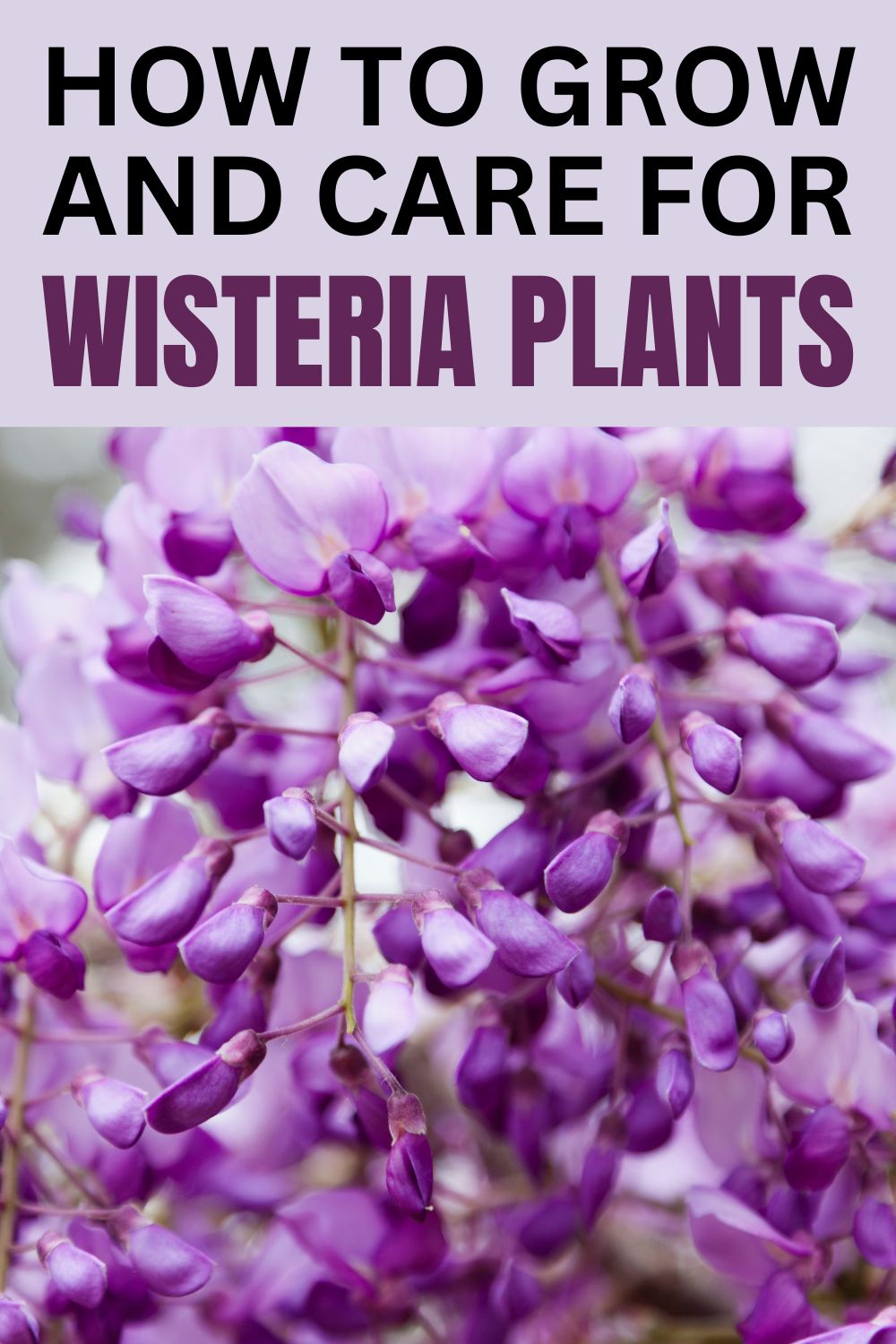Wisteria plants are a beautiful addition to any garden. But before you plant one, take into consideration that these plants will grow up to 50 feet tall and bloom heavily in the spring and summer, becoming dormant during the fall and winter.
About Wisteria Plants
Wisteria plants are a beautiful addition to any garden, and with proper care, they can thrive for many years. These climbing plants are known for their cascading clusters of flowers in shades of purple, pink, or white, and their strong fragrance. Wisterias can be trained to grow on trellises, fences, or arbors, and make an excellent addition to any landscape.
When planting wisteria, it is important to choose a location that receives full sun and has well-drained soil. Wisterias can be propagated from cuttings or by layering, and should be planted in early spring or fall. Once established, wisterias require little maintenance other than occasional pruning to control their growth. With proper care, these stunning plants will provide you with years of enjoyment.
How To Grow Wisteria Outdoors
Wisteria is a plant that needs plenty of sunlight to grow well. It can handle some shade, but it won’t produce as many flowers in this environment and may not flower at all if being planted against an outside wall where there’s no natural light coming through during the day time hours. I recommend positioning your wisteria so you’re getting six solid hours every single day.
Purple wisteria is a vine that’s not as tough to grow but still needs enough nutrients in its soil. Amend your garden with organic compost if it appears stuck or has low levels of fertilizer, and you’ll be able enjoy this beautiful flower all summer long!
Wisteria is a beautiful vine that thrives in acidic and well-drained soil. It also likes to have fertile, consistently moist but not soggy ground underneath it.
Planting Wisteria
Planting your wisteria in the right season gives you an opportunity to enjoy its beautiful leaves all summer long. You can also choose planting location that will let it grow well over winter, then watch as stunning spring flowers adorn these strong vines come next autumn!
Wisteria is an easily grown vine that needs a lot of space to grow. Make sure you have at least ten or fifteen feet between each plant so they don’t suffocate one another and sprout roots from all over the yard instead!
To keep the vines at bay, plant them far away from each other and any of your precious plants. If given a chance these flowering vines will quickly rampage over trees or shrubs to cause their untimely demise before they have time to get too out of control!
How to Care for Wisteria Plants
Although they appear quite high maintenance, caring for a wisteria tree or vine is easy. The biggest task involved in routine maintenance is pruning, which needs to be done regardless, but especially for those wanting their wisteria to grow into a tree.
As covered earlier, wisteria prefers lots of sunlight and should receive at least six hours of full sun a day. It also needs well-draining and fertile soil, notes Almanac. Soil can be made more fertile with compost, which can be added to the base of the plant annually in the spring. Mulching the plant in the spring will also help it self-regulate its moisture levels and prevent weeds. Wisteria only needs to be watered during dry spells, or when there is less than an inch of rain a week.
If you’re having a difficult time getting the plant to bloom, there are a few things you can try. One, add a phosphorus-rich soil amendment — either in the form of blooming fertilizer, bone meal, or rock phosphate. Snipping flower offshoots will also help the plant redirect its energy to its already existing blooms and buds. Young plants should be pruned in the late winter — aim for removing around half of their year’s growth. Mature vines can simply be pruned for aesthetic value or left alone. Tree wisteria should be pruned at least once in the summer, cut back 6 inches, and again in the winter.
Pruning Wisteria Plants
Pruning is the secret to good flowering, as wisteria only bloom on new wood.
Prune wisteria in late winter. Remove at least half of the prior year’s growth, leaving just a few buds per stem.
If you want a more formal appearance, also prune in summer after traditional flowering. Wisteria produces its flowers on new growth from spurs off the main shoots. Prune all this year’s new shoots back to a spur leaving no more than about about 6 inches of growth. In the process the whole plant can be tidied, trained and tied in so that there are no loose, trailing shoots.
Informally grown, mature plants need little or no subsequent pruning. But for a formally trained plant, cut side shoots back to 6 inches in summer, then shorten them again in winter to 3 buds.
Do you have a new wisteria? Cut the vine back severely right after planting. Then, the next year, cut the main stem or stems back to 3 feet of the previous season’s growth. Once the framework is full size, shorten further extension growth in midsummer to where growth began for that season.















